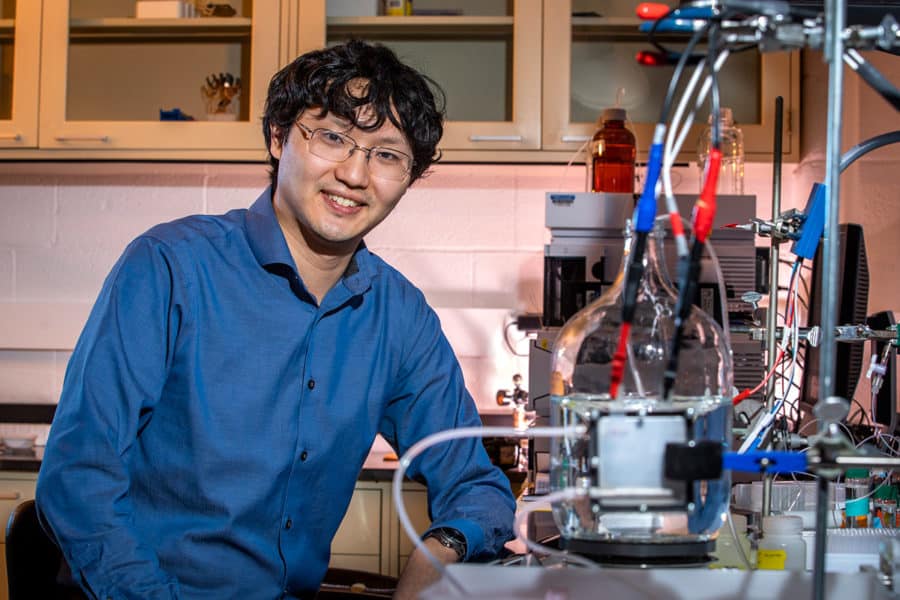Spent lithium-ion batteries contain valuable metals that are difficult to separate from each other for recycling purposes. Used batteries present a sustainable source of these metals, especially cobalt and nickel, but the current methods used for their separation have environmental and efficiency drawbacks. A new technology uses electrochemistry to efficiently separate and recover the metals, making spent batteries a highly sustainable secondary source of cobalt and nickel – the reserves of which are currently dwindling.
A new study, led by University of Illinois Urbana-Champaign chemical and biomolecular engineering professor Xiao Su, uses selective electrodeposition to recover valuable metals from commercially sourced lithium nickel manganese cobalt oxide – or NMC – battery electrodes. The method, published in the journal Nature Communications, produces final product purities of approximately 96.4% and 94.1% for cobalt and nickel, respectively, from spent NMC electrode wastes.
Su said cobalt and nickel have similar electrochemical properties – or standard reduction potentials – making it challenging for chemists to recover pure forms of each metal from battery electrodes.
“There are a variety of methods available for the recovery of cobalt and nickel from battery electrodes, but they have drawbacks,” Su said. “Most require energy-intensive high-temperature processes or strong solvents that present disposal challenges. The industry demands methods that will not cause additional problems like high energy consumption or toxic waste.”
The unique aspect of this study is the team’s development of a tunable liquid electrolyte and polymer coating on the electrodes.
In the lab, the researchers combined the electrolyte-polymer method with dismantled, leached and liquefied components of fully discharged NMC battery electrodes. By adjusting the salt concentrations of the electrolyte and the thickness of the polymer coating, researchers noted that distinct deposits of cobalt and nickel accumulated on the electrode surfaces through sequential electrodeposition. By the end of the process, the electrode had collected high-purity coatings of cobalt and nickel.
An economic analysis of the new approach showed that it was competitive with current Li-battery recycling methods once material revenue, material cost and energy consumption were all considered, the study reported.
“There’s further engineering optimization of the process that will be needed going forward, but this first proof-of-concept study confirms that low-temperature cobalt and nickel electrochemical recovery is possible,” Su said. “We’re very excited because the study shows a great example of sustainable electrically driven separations being used to recycle electrochemical batteries.”
Su also is affiliated with the Beckman Institute for Advanced Science and Technology and also is a professor of civil and environmental engineering at Illinois. The work was led by Illinois postdoctoral research associate Kwiyong Kim, with contributions from graduate students Darien Raymond and Riccardo Candeago.
The U.S Department of Energy ARPA-E program and Office of Basic Energy Sciences supported this research.
Editor’s notes:
To reach Xiao Su, call 217-300-0134; email [email protected].
The paper “Selective cobalt and nickel electrodeposition for lithium-ion battery recycling through integrated electrolyte and interface control” is available online and from the U. of I. News Bureau. DOI: 10.1038/s41467-021-26814-7.


